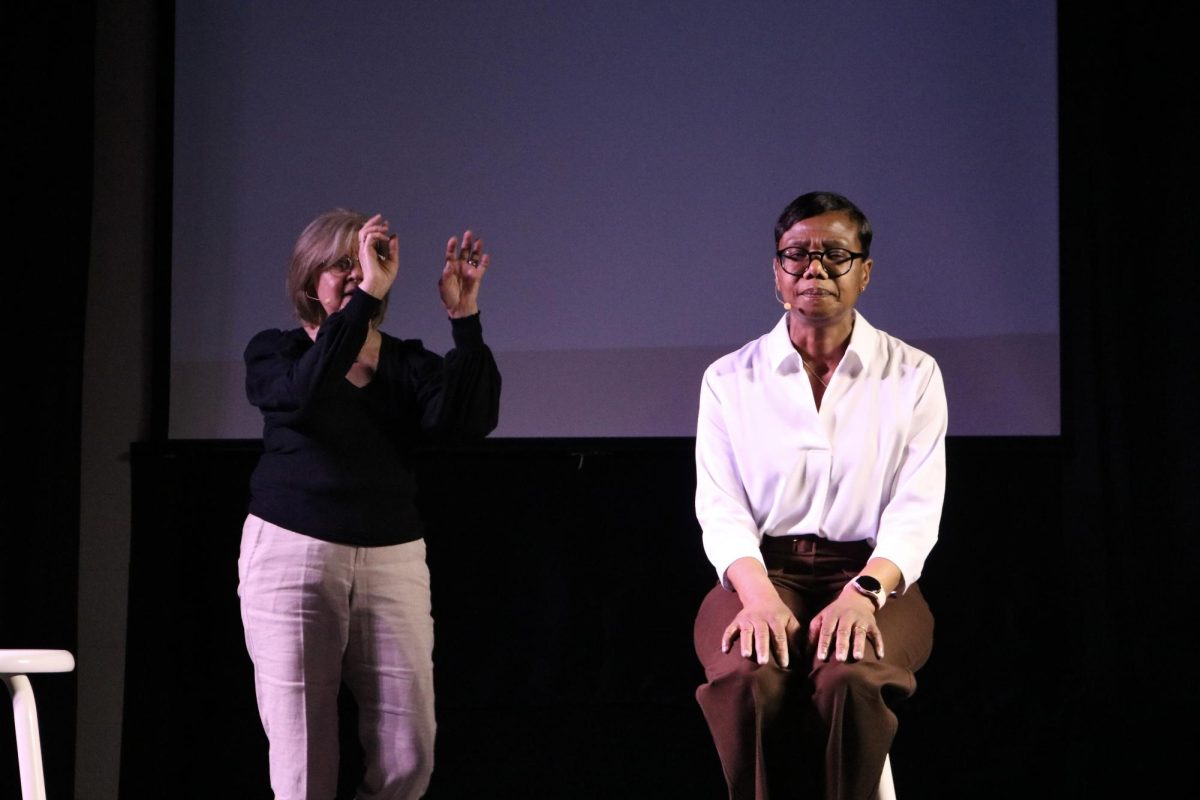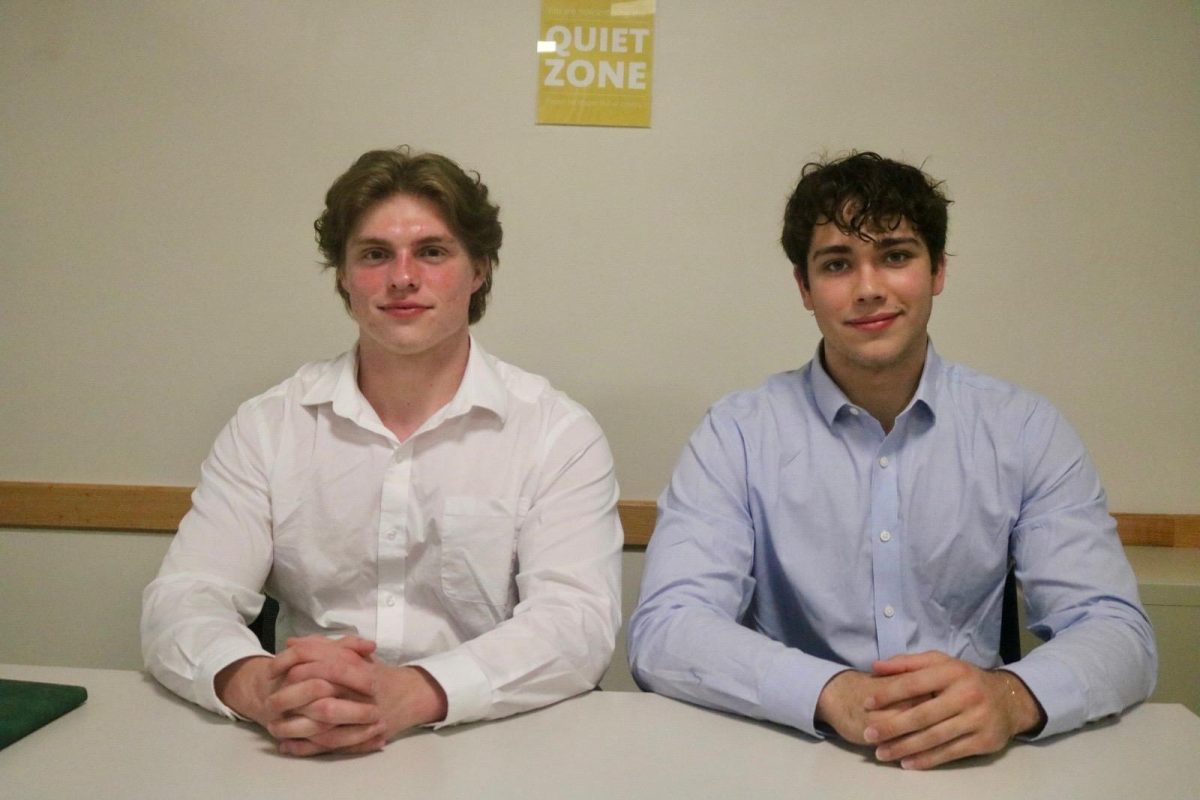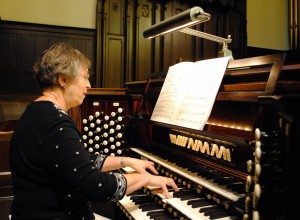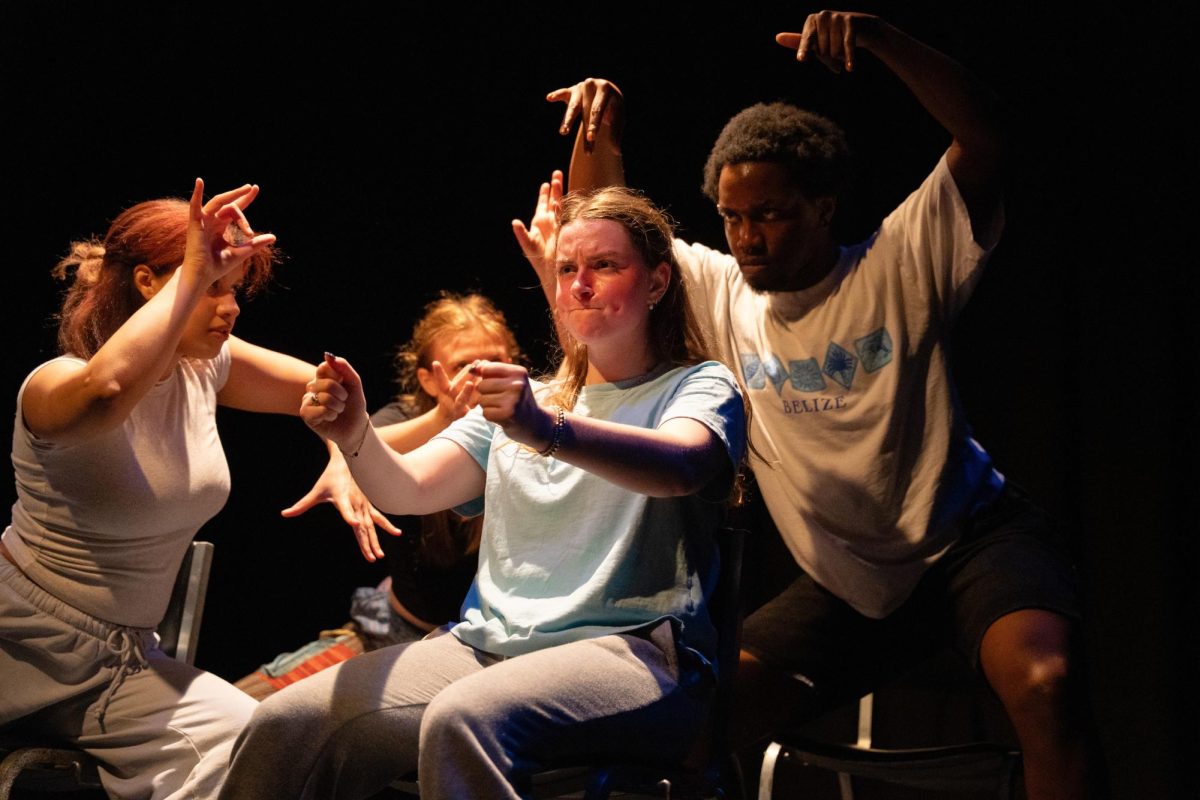By Darwin Manning
manningd@grinnell.edu
Grinnell is home to many hidden treasures, some better concealed than others. Perhaps one of the most special is Herrick Chapel’s Aeolian Skinner Organ. See this notable instrument in play this Sunday as Linda Bryant, College Organist, gives a performance entitled “Fall Colors for the Organ.”
The Herrick Chapel organ was constructed in 1949, during the height of the Aeolian Skinner Organ Company’s tenure, and is from the same family as one found in the Mormon Tabernacle in Salt Lake City. It’s now listed in the United States National Register of Historic Organs.
The organ went through a recent renovation in 2008, with a special ceremony for its rededication in April of 2009. The instrument is amazingly complex, allowing Bryant to reveal a variety of its features in her performance.
“Particularly on this organ, you can create such a wide array of colors and try to showcase that from the flute stops, a number of eight-foot flute stops that all have a different tone quality and timbre,” Bryant said.
The organ is comprised of about 4,000 pipes and five divisions. The breathtaking gold pipes that can be seen on one wall above the stage hide a collection of pipes, ranging in size and tone.
“Some of them are the size of a pencil and some are 16 feet tall and you could barely fit your arms around them,” Bryant said.
Additionally, the organ is composed of five divisions of keys that go in order from the swell, great, choir and positive, down to the pedal board. Amongst the nearly 4,000 pipes, there are fifty-nine rows, or ranks, of pipes.
Professor Bryant usually aims to have a show towards the beginning of the year because she has the summer to prepare and to get people excited about the instrument early on. Two of the pieces that she will be playing for this show are by Henri Mulet, who she believes creates quite a nice spectacle with the architecture of Herrick.
“There are two… by a composer who I think of as an artist, because he was describing windows in a church building. One of them is called Stained Glass,” said Bryant. “The other is called Rose Window and I can imagine, as I play, sunbeams coming through various panels.”
Also to be included in the show this Sunday will be six shorter pieces by Joseph Haydn. These six were written for a musical clock which was connected to a small pipe organ, where a clock mechanism would trigger the organ to play various pieces.
“[The Haydn pieces] show off particularly the flute stops, and so I was thinking of the different colors when I put this show together,” said Bryant. “Some other things you will hear are the reed and the reed chorus, also the oboe, the French and English horn and the clarinet.”
The historic instrument was refurbished in 2009 by Joe Dzeda and Nicholas Thompson-Allen, of the A. Thompson Allen Company in New Haven, Connecticut. Following this rededication, the organ received national attention from the Diocesan Magazine.
Overall, however, the instrument has been kept largely the same as it was in 1949.
“This is the original, basically untouched,” Bryant said, “and it’s like what it was when first installed and a very worthy instrument.”
Ultimately, her hope is that more students become aware of the instrument and are able to enjoy it through its tenure at Grinnell.
Bryant’s show is in Herrick Chapel this Sunday, September 23, at 3:00 p.m.


















































